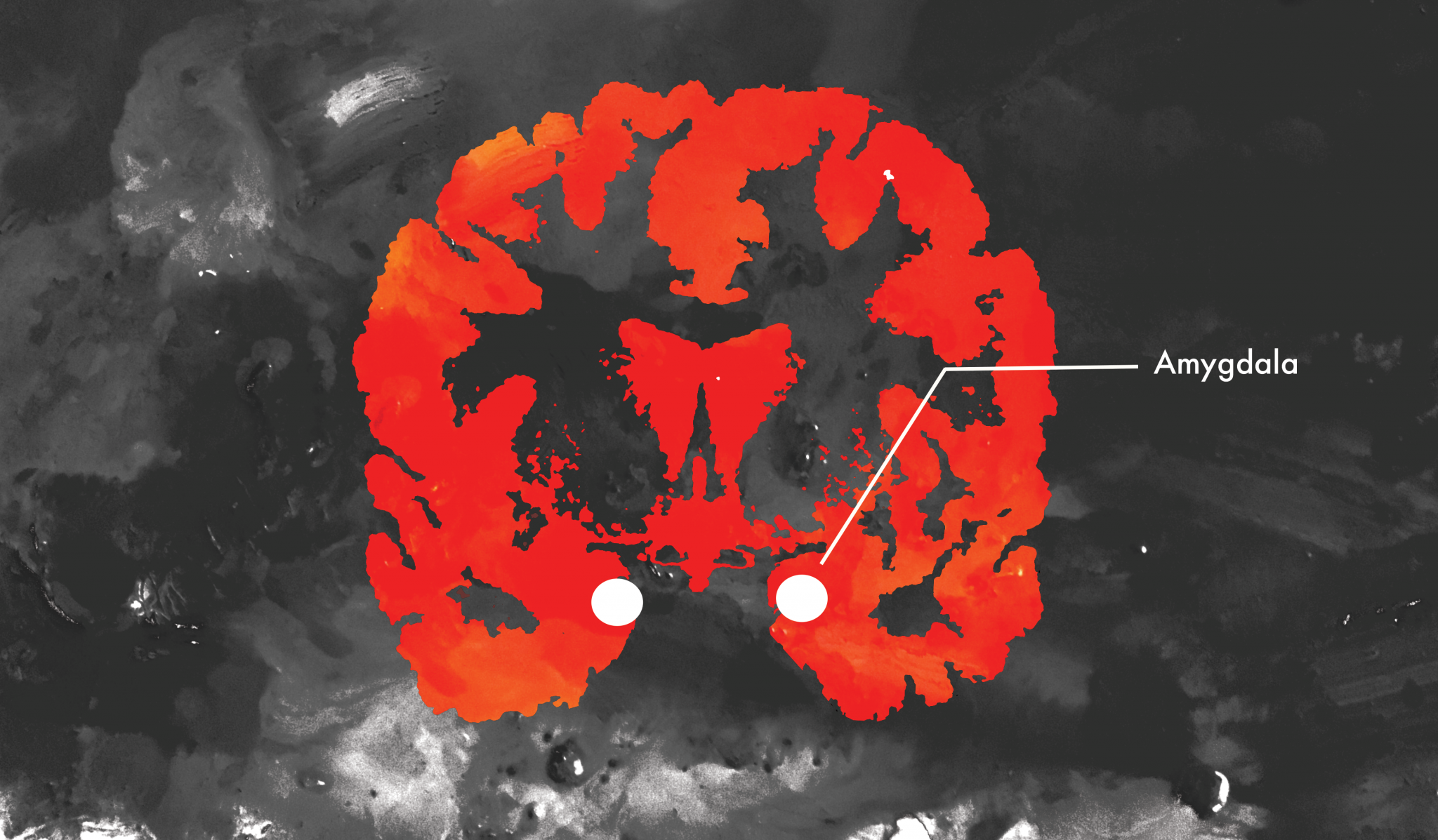Introduction
Many people are familiar with phrases like “top dog” and “alpha male,” whether in reference to a pack of wolves or a competitive workplace environment. These are colloquial portrayals of dominance, often explained as a social behavioral relationship rooted in aggression and applied to the hierarchies of an entire social group. The field of social neuroscience seeks to discover the underlying brain regions, pathways, and neurotransmitters involved in different social behaviors like dominance. Researchers have discovered a multitude of brain regions and neuromodulator chemicals that are associated with dominance, proving it to be a more complex behavior, or set of behaviors, than first thought. The interaction of these brain regions and chemicals allows animals to both perform and recognize dominance behaviors in their social groups. Gaining insight into the underlying mechanisms of dominance will enable us to comprehend our own dominance behaviors and how they might influence our societal norms. Dominance differences in society are correlated with the appearance of different mental illnesses, but before these findings can be completely understood, researchers must determine the mechanisms of dominance itself [1] . Understanding the neural mechanisms of a behavior is a neuroscientist’s first step in learning about the behavior as a whole. To do this, researchers must piece together how these behaviors manifest in the brain by studying the different parts of the brain that are involved individually.

Anatomy of Dominance
Over the years, researchers have connected the primary brain regions involved in dominance and discovered a wide network of areas that each incorporate different aspects of the behavior. These regions include, but are not limited to, the amygdala, hippocampus, striatum, and prefrontal cortex. In one of the earliest studies, Rosvold et al. surgically removed the amygdala of three monkeys to determine the effect on social behavior and dominance [2] . Three out of the eight monkeys were identified as dominant and given lesions targeting the amygdala, a small region of the brain often associated with emotion and fear. Social hierarchies between monkeys were observed in a competitive environment before and after the surgery. After the surgery, the first two monkeys became submissive to the rest of the group and were overtaken by the monkey below them in the hierarchy. However, the third monkey did not become submissive after the surgery. The researchers inferred this was because the monkey was not faced with an active dominant competitor; the remaining monkeys were all characterized as being either submissive or passive. This suggests that the change in dominance was dependent on the social interactions and presence of competition post-operation. In other words, the lesion in the amygdala was not the only factor at play when the hierarchy changed. Social interactions and competition also play an integral role in changes in dominance [2] .
Additional studies have further confirmed the amygdala’s involvement in dominance behaviors. However, the results of these studies are not all consistent with the original Rosvold study. Other researchers found that monkeys with lesions in the amygdala explored more socially with their group members and had a reduced response to social threats [3] . Emery et al. found that monkeys with lesions in the amygdala were less anxious and more confident in social situations, which related to an increase in social relationships [4] . Unlike the Rosvold study, these results did not show a direct change in social dominance in the monkeys and even seem to counter the study’s results because the monkeys appeared more socially free. This suggests the amygdala is involved in upholding social norms, or normal social interactions between individuals. Damage to it could cause changes in the ways the monkeys interacted with each other, such as how the monkeys in the previous two studies were shown to handle social interactions differently post-operation. A lesion to the amygdala could have an effect on the behavioral observations of dominance depending on the social context. For example, in the Rosvold study, the monkeys were placed in a competitive environment where food was scarce, forcing them to create a social hierarchy. In a competitive context, the lesioned amygdala’s inability to perceive social norms might explain why the monkeys were unable to maintain their place in the hierarchy as the dominant. The ability to perceive social norms seems to be a part of being dominant, but it is not the full story.
A study by Kumaran et al. noted that hippocampal activity is associated with learning hierarchies in different contexts [5] . The hippocampus was shown to be involved in learning both social hierarchies, like relational power differences between people, as well as nonsocial hierarchies, such as determining which object has “more” or “less” value, thus extending hierarchies to multiple contexts. In contrast, the amygdala was only involved in learning social hierarchies [5] . While the amygdala seems to operate in a purely social context, the hippocampus encodes hierarchies as a whole. Combining information from both regions of the brain can help us understand the different aspects of dominance and where each aspect might be encoded.
The striatum and lateral prefrontal cortex (LPFC) also participate in the perception of dominance. A study by Zink et al. showed that both regions had increased activity when the subject viewed a higher-ranked player in a competitive game compared to a lower-ranked individual [6] . Including the information regarding perception of social rank encoded by the striatum and LPFC creates a more complete picture of dominance as a whole.
The collection of these findings continues to demonstrate how widely distributed the encoding of dominance is within the brain. There are many different brain regions that participate in the perception of dominance in different contexts. The amygdala, hippocampus, striatum, and prefrontal cortex are only four of the many regions of the brain found to be involved in dominance. The complexity does not stop there, however, for chemical communication throughout the brain proves to be equally important.
Chemical Connections
The next step in discovering the neural mechanisms underlying dominance requires a closer look at hormone and neurotransmitter systems. One of the most accepted and studied hormones involved in social behaviors is testosterone. Testosterone is particularly important in aggressive behaviors relating to status and dominance. Early research dates back to the 1970s when Rose, Holaday, and Bernstein discovered that rhesus monkeys with more circulating testosterone were both more aggressive and held more dominant positions in social groups [7] . Since then, research has built a strong correlation between testosterone and dominance behaviors that has been observed in animals as well as humans [8] .
Similar to the relationship between testosterone and dominance, the neurotransmitter serotonin has also been shown to have higher circulating levels in dominant individuals [10] . Increasing serotonin levels in the brains of subordinate monkeys enhance their dominant behaviors [11] . Similarly, humans who were given a serotonin precursor exhibited increased dominant interactions [12] .
This research may support the notion that having higher levels of serotonin and testosterone cause increased dominant behaviors, but the correlational and causational relationships need further analysis. While both testosterone
and serotonin are shown to have strong affiliations with dominance behaviors, there is little evidence for the interaction between these chemicals and the described brain regions associated with the behavior. It is apparent that there is more to the story than what research has revealed thus far.
Putting the Pieces Together

While social dominance has been associated with different regions of the brain as well as multiple hormones and neurotransmitters, a more complete understanding could be achieved if researchers stitched this evidence together. Current research suggests that social dominance is a highly interconnected behavior in the brain, but none of the reviews or studies focus on how this interconnectivity is established. How do these regions of the brain communicate? What role might the hormones and neurotransmitters play in these relationships? It is known that the prefrontal cortex, striatum, and amygdala are connected in a circuit that may be involved in social interactions and social information; could this circuit be mediated by serotonin or testosterone or other involved neurotransmitters in contexts of social dominance [13] ? Additionally, research suggests that while lesioning the amygdala seems to have an effect on social behaviors, these lesions often do not account for the subnuclei of the amygdala, which may have regulatory effects on social behavior [14] . How do these subnuclei affect dominance behaviors and fit into the greater circuitry? Unanswered questions like these could drive the field of social neuroscience toward discovering a more holistic representation of dominance in the brain. While there is a great deal of knowledge concerning the individual neural bases of dominance, it is apparent that the field still has much to accomplish before the biological basis of dominance is understood. Continued research into how the areas of the brain are connected and how different chemicals modulate these areas may provide satisfying answers.
Research on Dominance at UW
One hypothesis proposed by John Wingfield of the University of Washington and his associates, called the challenge hypothesis, suggests that an individual’s levels of testosterone tend to rise during the mating season [9] . Increased testosterone levels are important during these times of “social instability” because members of a group must affirm their places in the hierarchy to guarantee themselves territory and mates. The increased levels of testosterone correlated with increased aggression and social dominance behaviors. Animals that are more aggressive and dominant tend to mate more successfully because they show physical and sexual fitness, which assures their mate that they will produce viable offspring [9] . The involvement of testosterone, aggression, and dominance in reproduction shows that dominance behaviors play an integral role in the fitness and reproductive success of individuals, thus driving the evolution of the entire species.
- Pickett K.E., Wilkinson R.G. (2010). Inequality: An underacknowledged source of mental illness and distress. Br. J. Psychiatry J. Ment. Sci., 197, 426-428.
- Rosvold H. E., Mirsky A. F., Pribram K. H. (1954). Influence of amygdalectomy on social behavior in monkeys. J. Comp. Physiol. Psychol., 47, 173-178.
- Machado C. J., Bachevalier J. (2006). The impact of selective amygdala, orbital frontal cortex, or hippocampal formation lesions on established social relationships in rhesus monkeys. Behavioral Neuroscience, 120, 761-786.
- Emery N. J., Capitanio J. P., Mason W. A., Machado C. J., Mendoza S. P., Amaral D. G. (2001). The effects of bilateral lesions of the amygdala on dyadic social interactions in rhesus monkeys. Behavioral Neuroscience, 115, 515-544.
- Kumaran D., Melo H. L., Duzel E. (2012). The emergence and representation of knowledge about social and nonsocial hierarchies. Neuron, 76, 653-666.
- Zink C. F., Tong Y., Chen Q., Bassett G. S., Stein J. L., Meyer-Lindenburg A. (2008). Know your place: neural processing of social hierarchy in humans. Neuron, 58, 273-283).
- Rose R. M., Holaday J. W., Bernstein I. S. (1971). Plasma testosterone, dominance rank, and aggressive behavior in male rhesus monkeys. Nature, 231, 366-368.
- Eisenegger C., Haushofer J., Fehr E. (2011). The role of testosterone in social interaction. Trends in Cognitive Sciences, 15(6), 263-271.
- Wingfield J. C., Hegner R. E., Dufty A. M., Ball G. F. (1990). The “challenge hypothesis:” theoretical implications for patterns of testosterone secretion, mating systems, and breeding strategies. The American Naturalist, 136(6), 826-846.
- Raleigh M. J., McGuire M. T., Brammer G. L., Yuwiler A. (1984). Social and environmental influences on blood serotonin concentrations in monkeys. Arch. Gen. Psychiatry, 41, 405-410.
- Raleigh M. J. McGuire M. T., Brammer G. L., Pollack D. B., Yuwiler A. (1991). Serotonergic mechanisms promote dominance acquisition in adult male vervet monkeys. Brain Research, 559, 181-190.
- Moskowitz D. S., Pinard G., Zuroff D. C., Annable L., Young S. N. (2001). The effect of tryptophan on social interaction in everyday life: a placebo controlled study. Neuropsychopharmacology, 25, 277-289.
- Cho Y. T., Ernst M., Fudge J. L. (2013). Cortico-amygdala-striatal circuits are organized as hierarchical subsystems throughout the primate amygdala. Journal of Neuroscience, 33(35), 14017-14030.
- LeDoux J. The amygdala. Curr. Biol. 2007;17(20):R868–R874.
